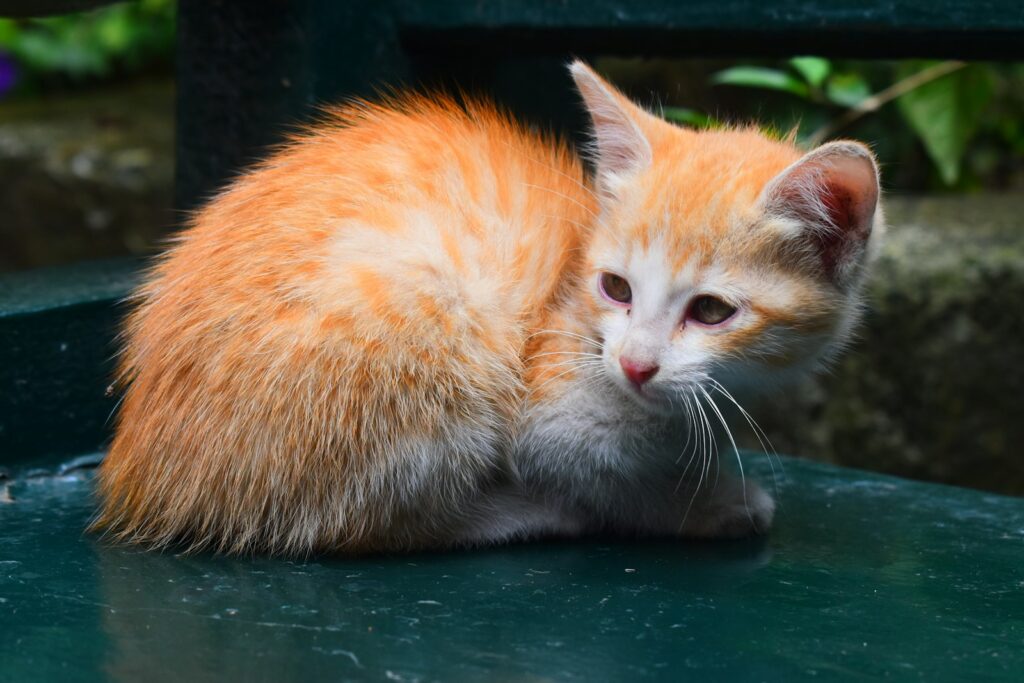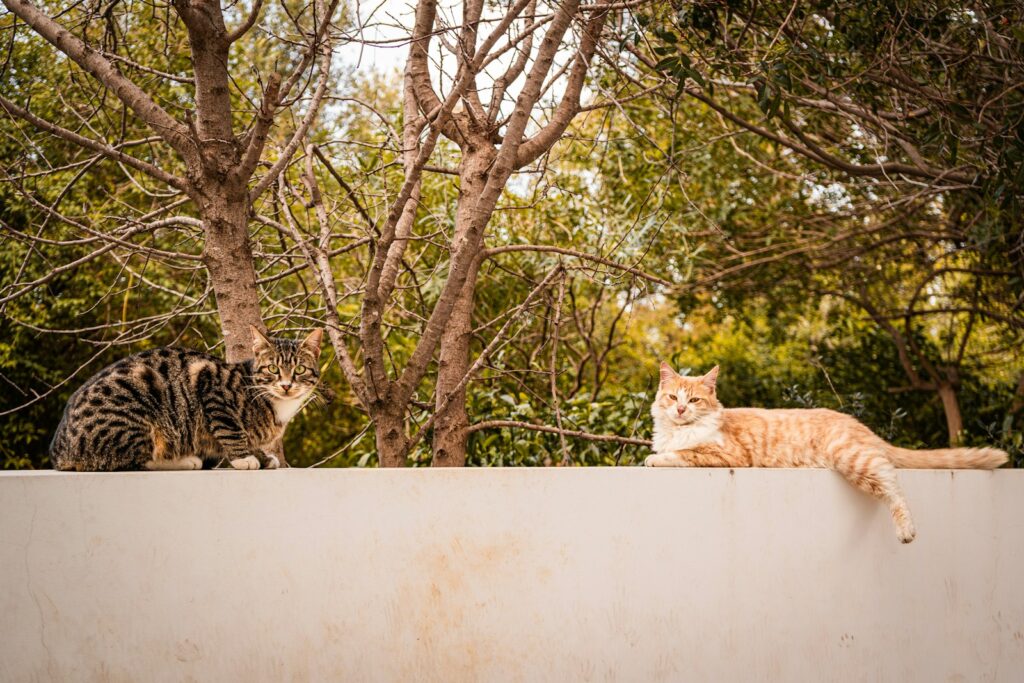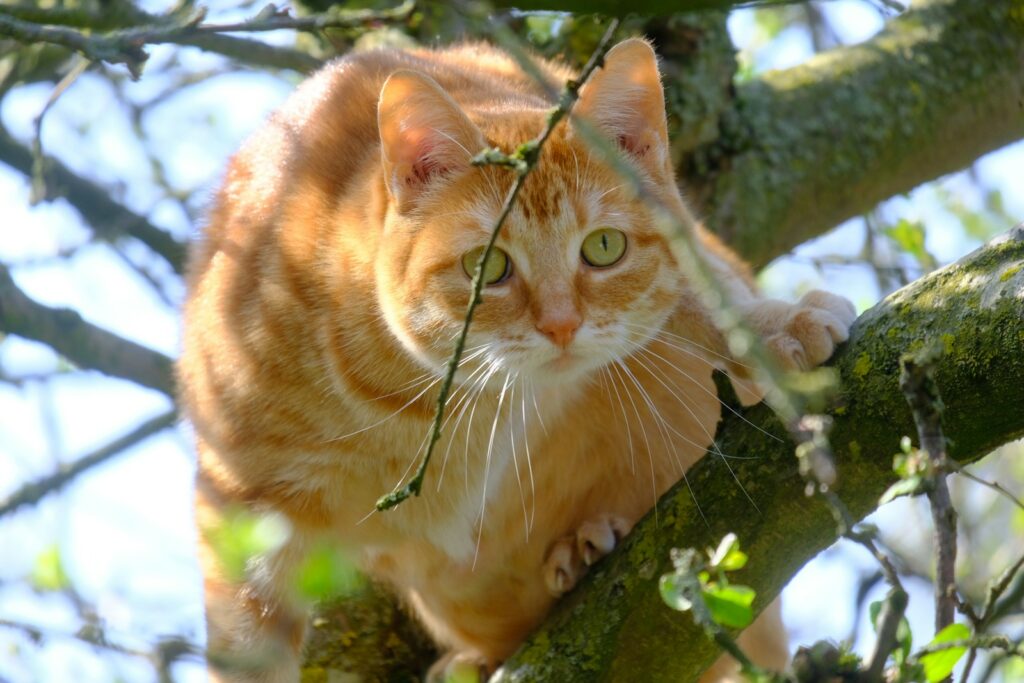The sight of an orange cat instantly draws attention. The fiery coat, the expressive eyes, and the distinct personality seem almost magnetic. But behind that charm lies a fascinating genetic story that sets them apart from nearly all other mammals. Scientists have recently uncovered the genetic foundation behind their vibrant fur, revealing that orange cats are not just visually special but genetically one of a kind. Their coloration stems from a mutation that behaves in a way unseen in most mammals, blending inheritance, pigmentation, and sex-linked expression in a rare combination.
Origin of the Orange-Coat Mutation in Domestic Cats

The vibrant orange hue in domestic cats originates from a genetic mutation located near the ARHGAP36 gene on the X chromosome. This mutation acts by altering pigment production in skin cells called melanocytes. Instead of producing the usual black or brown pigment known as eumelanin, orange cats produce pheomelanin, a reddish-yellow pigment. The discovery of this mutation was only confirmed in 2025 through advanced genome sequencing. Its location and effect make it one of the most distinctive color mutations seen in any mammalian species to date.
The X-Chromosome Link and Sex Bias in Orange Cats
Because the orange coat gene lies on the X chromosome, it creates a strong difference between male and female cats. Males, having only one X chromosome, show orange coloration if they inherit the mutation. Females, however, need the mutation on both X chromosomes to be fully orange. If they have just one copy, their fur becomes a mix of orange and other colors, producing the well-known tortoiseshell pattern. This unique form of sex-linked inheritance explains why most orange cats are male, a trait uncommon in other mammals with similar pigment variations.
How the Orange Gene Interacts with Other Coat-Color Genes

The orange gene doesn’t work in isolation. It interacts with other genes responsible for pattern and pigment distribution. The agouti and tabby genes, for instance, determine the striped or spotted appearance seen in many orange cats. The orange allele overrides the usual dark pigments but leaves the tabby pattern visible, creating the familiar orange-tabby effect. This interplay between color and pattern genes is rare among mammals, as most species with red or orange hues display uniform coloration rather than intricate, genetically driven striping like domestic cats.
Why Orange Cats Differ from Other Mammals’ Orange or Red Coats
While other mammals, like foxes or big cats, also display reddish or orange tones, the underlying genetics differ significantly. Their coloration arises from variations in pigment-enzyme genes that alter the balance between eumelanin and pheomelanin. Orange cats, however, owe their hue to a deletion mutation on the X chromosome, which influences pigment regulation rather than pigment creation. This mechanism is unique; no other mammal uses the same sex-linked genetic pathway to produce orange fur. It’s a vivid example of how evolution can find multiple solutions to achieve similar appearances.
Timeline: When the Genetic Mystery Was Solved
For over a century, breeders and scientists observed that orange fur in cats followed a distinctive inheritance pattern, but its molecular basis remained unclear. Earlier mapping efforts located the “orange locus” on the X chromosome, yet the precise gene remained elusive. In 2024 and 2025, modern sequencing technology finally pinpointed the exact DNA deletion responsible for the color. This discovery marked a milestone in feline genetics, confirming long-held suspicions and proving that cats possess one of the most complex pigment inheritance systems in all mammals.
Why the Orange Mutation Likely Emerged During Domestication

Evidence suggests that the orange coat mutation developed early in cat domestication, thousands of years ago. Ancient art and historical records show orange or ginger cats accompanying humans in households and granaries, suggesting early selection for their striking color. Humans may have preferred their appearance, whether consciously or subconsciously, helping the trait spread. Over generations, breeding and environmental adaptation reinforced the mutation. As a result, domestic cats today show far more color variation, especially orange tones, than most wild feline relatives, underscoring the deep human role in their evolution.
Behavioral Associations with Orange Cats
Orange cats are often described as friendly, confident, and attention-seeking. While these observations are anecdotal, researchers have explored whether their genetics might play an indirect role. The ARHGAP36 gene, which influences pigment, also affects cell signaling in development. Some scientists hypothesize that its activity could have mild effects beyond coloration, perhaps influencing temperament or social behavior. Though no direct scientific link has been proven, the distinctiveness of orange cats’ genetics keeps curiosity alive, blending personality myths with molecular biology in an intriguing way.
Why Female Orange Cats Are So Rare
A female cat must inherit two copies of the orange-coat mutation, one from each parent, to appear completely orange. If she receives only one, her fur becomes a mix of orange and darker patches due to random X-chromosome inactivation during early development. This mosaic effect creates tortoiseshell or calico cats, where orange and non-orange cells coexist. Because the probability of receiving two mutated X chromosomes is low, fully orange females are rare. This phenomenon showcases how unique sex-linked genetics can shape visible diversity within a single species.
What Makes Orange Cats Genetically Unique Among Mammals
Orange cats stand out from other mammals for several reasons. Their coat color is controlled by a deletion mutation on the X chromosome, a highly unusual genetic mechanism. The mutation regulates pigment cell activity rather than changing pigment structure, interacts with other coat-pattern genes, and exhibits sex-linked inheritance. Together, these features create a genetic blueprint not seen elsewhere in the animal kingdom. This makes orange cats not only visually distinctive but also scientifically valuable for understanding how evolution experiments with color and inheritance in mammals.
The Future of Research on Orange Cat Genetics

Although the genetic cause of orange fur is now known, many questions remain. Scientists still seek to understand precisely how the ARHGAP36 gene alters pigment cell behavior, whether the mutation has effects on other body systems, and how widespread the trait is across global cat populations. Further research could reveal connections to health, personality, or adaptability. As genetic technology advances, studying orange cats may offer broader insights into how coloration evolves, turning this familiar household pet into a key model for understanding mammalian diversity.
Comments